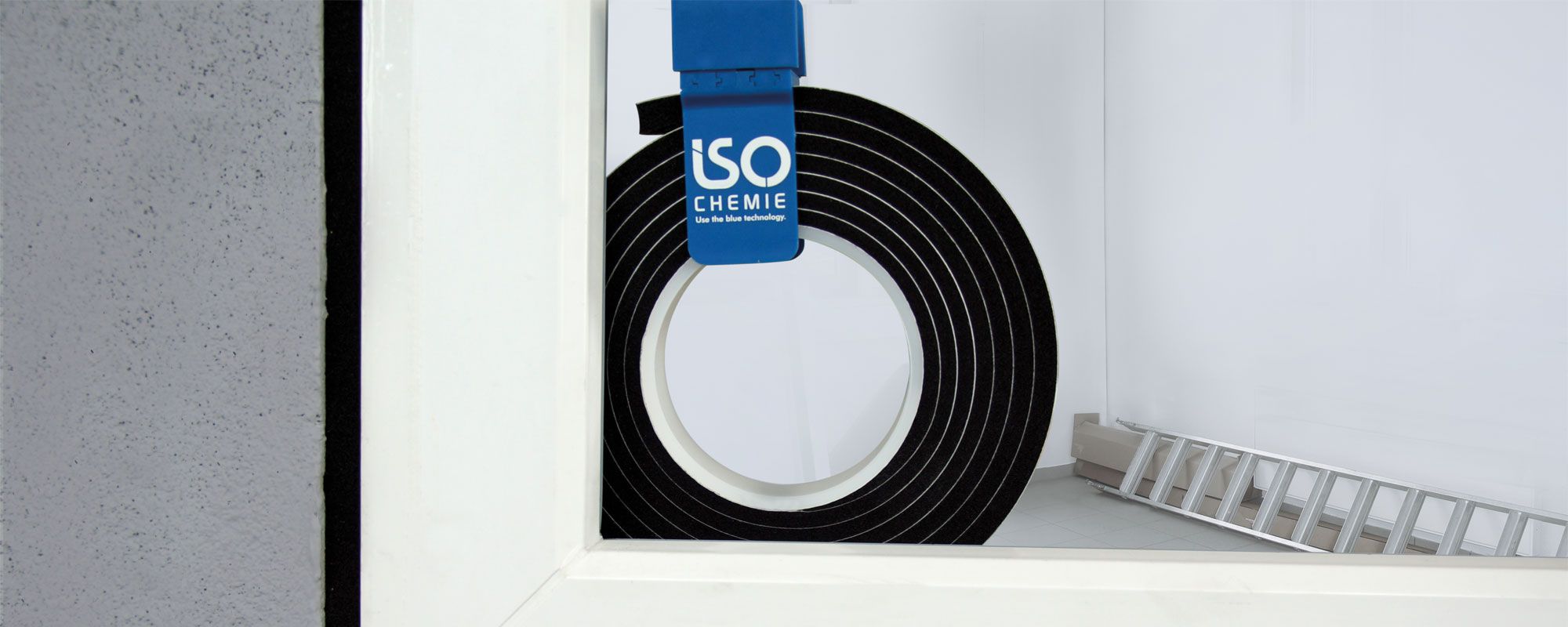ISO-BLOCO 600 „PREMIUM EDITION“ - For internal and external sealing
Pre-compressed, impregnated joint sealing tapes made from flexible PU foam material have been used for years in a variety of ways for sealing construction expansion joints. The main advantages of these sealing tapes lie in their permanent flexibility and their movement absorption properties. Even large construction movement joints can be reliably sealed with the tapes.
In most cases pre-compressed sealing tapes such as ISO-BLOCO 600 „PREMIUM EDITION“ are used for sealing joints against driving rain. The construction joints are permanently sealed against driving rain with a minimum load value of ≥ 600 pa.
Therefore the manufacturer specifies the tape for the relevant tested joint width, according to the new DIN 18542:2009-07. So a tape with the designation 25/11-25 will permanently seal a construction joint with a width between 11and 25 mm against driving rain. The cut width of the tape in this example is 25mm. Which is how deep the tape will go into the joint.
If you want to use the same tape on the inner side of the joint, then this must also be tested according to the BG R standard in DIN 18542:2009-07.
The material is also checked for air-tightness at the same time and must have an a-value of < 0.1 m³/[h•m(daPa)2/3].
In order to achieve this value, the tape must remain slightly compressed (= pressed together) in the joint. This means that the cell structure of the foam is denser and allows less air and thus heat, water vapour and energy through the construction joint. This is for the internal seal.
§6 of the EnEV (energy saving regulations) calls for the permanent air-tight sealing of construction joint.
This can only be achieved if the tape cannot expand fully in the joint.
Example:
If you use a tape with the dimensions 25/11-25 (BG 1 external use), the permissible joint width for internal use is reduced to 25/11-20 (BG R). This means that the interior joint width must not exceed 20 mm.
As the joint width is reduced by 5 mm, the tape remains more compressed and lets less air, water vapour and energy out, and therefore meets the specifications for the interior sealing of construction joints in accordance with the EnEV and RAL Installation Guide 2010.

Extract from the comparison of permissible joint widths between BG 1 (external sealing against driving rain) and BG R (internal air-tight sealing)









